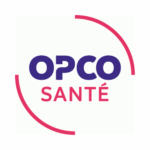Our Expertise: Microsoft 365
Do your teams truly master the full potential of Microsoft 365?
A technical migration is not enough. Without support, tools are misused, productivity stalls, and adoption remains superficial.
With Mandarine Academy, make onboarding easier, ensure secure usage, and create the conditions for sustainable adoption.

They place their trust in us












Common Barriers to Microsoft 365 Adoption
Switching to Microsoft 365 goes beyond a technical rollout. Without proper support, teams feel lost, tools overlap, and usage remains inefficient.
Here are the most common barriers we encounter:
Low adoption of tools after migration
Overloaded, poorly trained employees who develop bad practices
A lack of understanding of synergies between tools (Teams, SharePoint, OneDrive, etc.)
Managers lacking the means to drive change within their teams
The result: powerful tools… but underused or misused, with a return on investment that takes longer to materialise.

Our Microsoft 365 Support
The result: smoother adoption, more embedded practices, and a learning experience that is both flexible and structured.








Microsoft 365 Driving Collective Productivity
For your teams, this means:
Productivity & autonomy: the right tools at the right time to save time and streamline tasks.
Stronger collaboration: better communication, seamless co-editing, clearer teamwork.
Sustainable adoption: less resistance, greater efficiency, embedded practices.
HR management: training tracking, completion rates, user feedback, and visible upskilling
70%
of Microsoft 365 projects fail to deliver on their promises without support
Why choose Mandarine Academy?
At Mandarine Academy, we have been delivering Microsoft 365 training for over 10 years. Our instructional team designs learning pathways tailored to each role, skill level, and organisation.
We do not train on the tool itself, but on its use. Our resources are available online 24/7, accessible through your LMS or our platform, and offered in blended learning, self-paced e-learning, or webinars.
Want successful adoption? We’ll support you every step of the way.

FAQ
Microsoft 365 Training
Why train my teams if they are already using Microsoft 365?
What is the value of personalised support?
Each employee has different needs, skill levels, and roles. Our approach tailors the content to every profile—office staff, field teams, administrative roles, management. The result: training that is more engaging, more memorable, and more impactful.
How long does it take to see results?
The first benefits appear within the first weeks: time savings, fewer errors, improved collaboration. In most cases, a structured training plan delivers tangible results within 1 to 3 months, depending on team engagement.